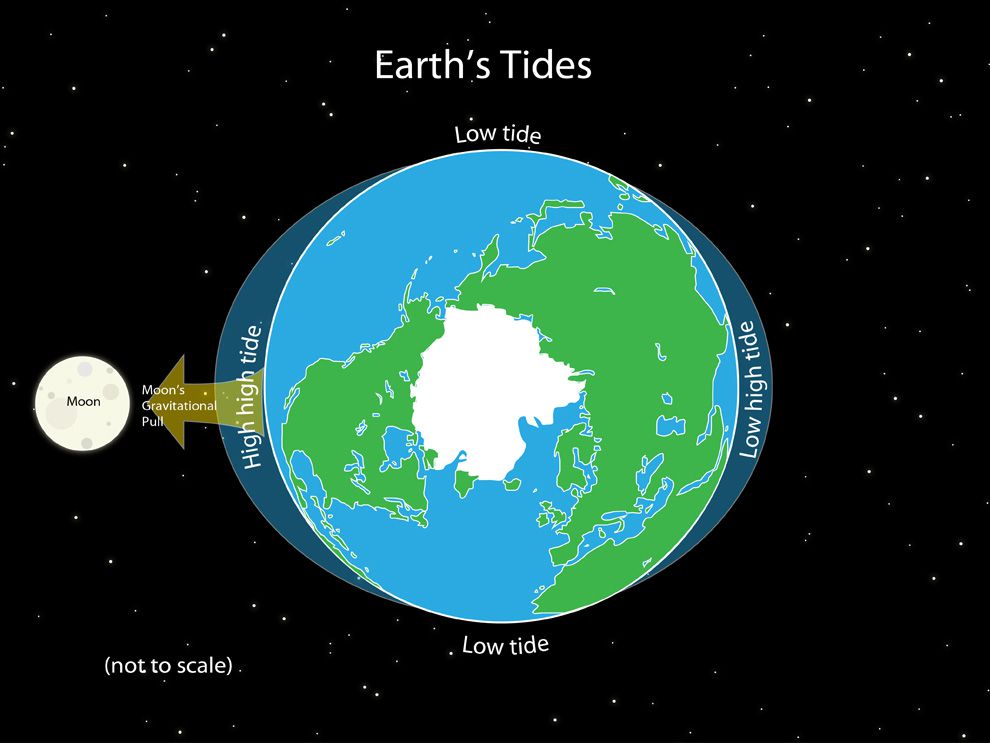Tides - Weekly Blog (4/29-5/3)
 |
Earth's Tides by National GeographicSummary
We have all heard and seen tides, but what causes them, and how are they created? The position of the moon affects the tides. As you can see in the image above, the moon's gravity is pulling the body of water towards the moon. High and low tides are caused by tidal bulges. Tidal bulges occur when the body of water is pulled towards and away from the moon's gravity. The bulge facing away from the moon occurs because the Earth itself is pulled. During a tidal bulge, there is a high tide, however, in between the two tidal bulges, there is a low tide. In the image above, you can see that the top and bottom of the Earth have low tides, whereas the sides have high tides because they are facing towards and away from the moon.
As well as the moon, the sun also influences the tides. When the high tide is high, and the low tide is low, it is a spring tide. Over a 15 -day period, the spring tide occurs on days 0 and 15. When there is less contrast between high and low tide, it is a neap tide. There are two periods of spring tides and two periods of neap tides, that occur during the moon's orbit. In conclusion, the sun's gravity influences the moon's pull on the Earth. Tides are created when the Moon pulls the Earth's surface. In a spring tide, the gravity of the sun and moon pulls the Earth's surface in opposite or same directions. A neap tide is created when the gravity of the sun and moon pulls the Earth's surface at right angles.
SP2: Developing and Using Models
This week, we used models to represent the position of the Earth, Sun, and Moon and how they influence tides. In the models, we could change the speed, time, and view to help understand the topic at a higher level. We also used simulations to help us develop explanations for tides and how they work. By gathering and modeling data about the topic, we could learn to a deeper level. Models helped us understand how the world works and what influences various factors that we witness in our day to day lives.
XCC: Patterns
By observing natural patterns, we can compare different types of tides and how they occur similarly every day. Tides follow a repeating pattern. For example, there are always two periods of spring tides and two periods of neap tides during the moon's orbit. Based on this information, we can learn more about the frequency of tides and how they are impacted by natural causes. Scientists can make predictions about the type of tide that will occur, and people can be warned when there is a higher tide. By observing patterns, I have learned more about tides and the effects of natural causes.
|
Comments
Post a Comment